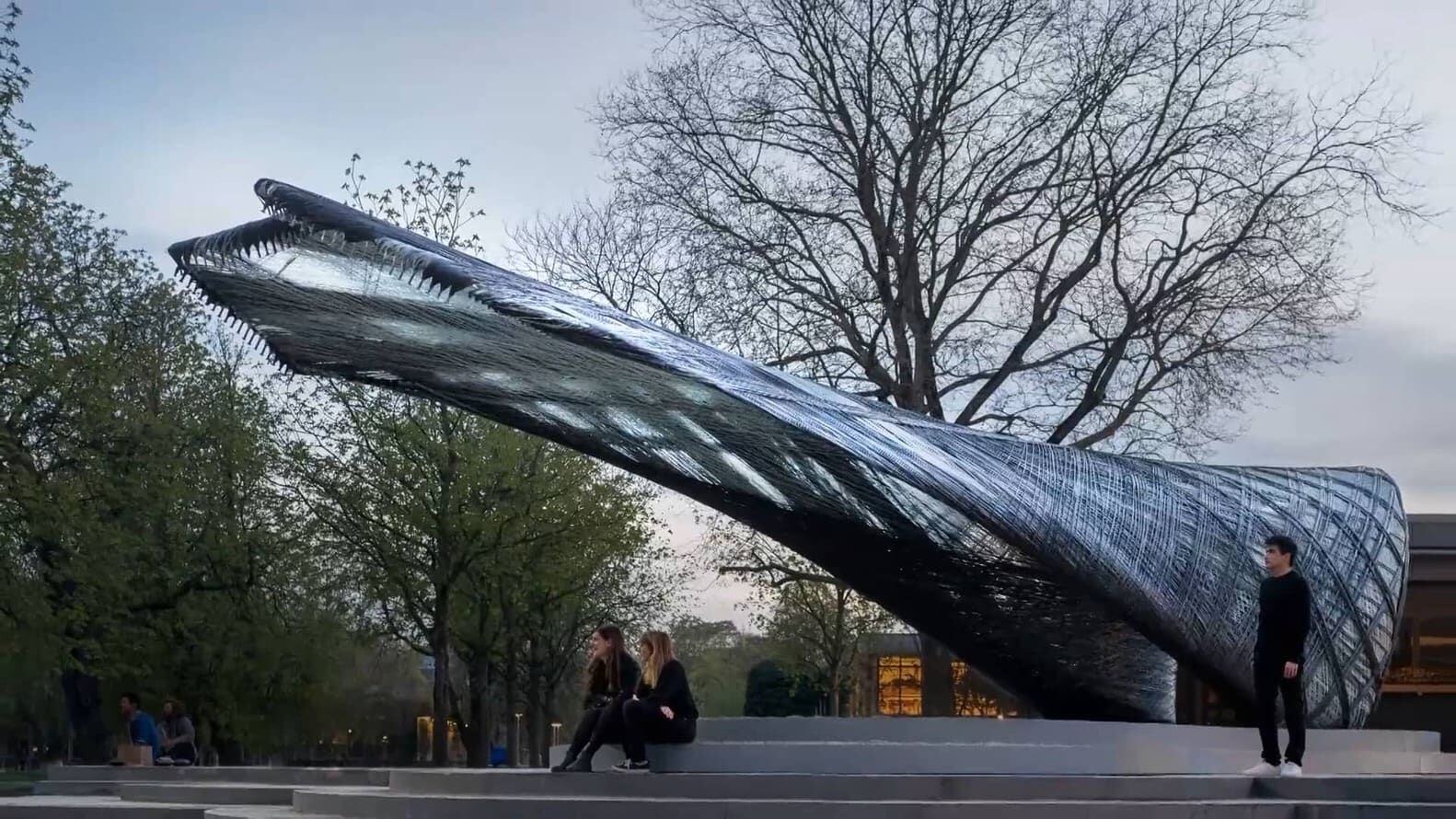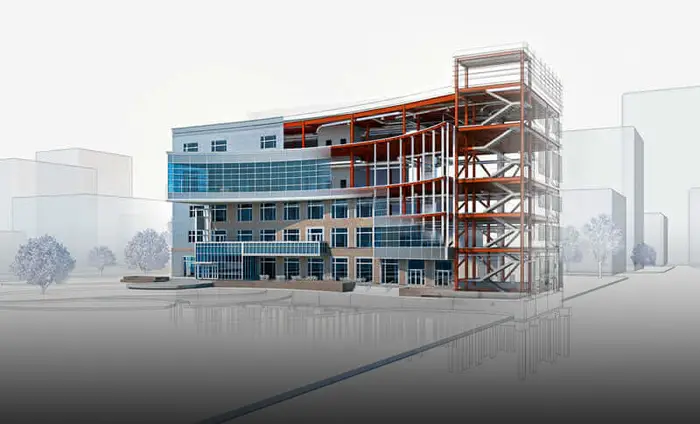Exploring 10 Impressive High-Rise Landmarks (2024)
Table of Contents
As cities become more crowded and land scarce, building upward is often the only viable option to accommodate growing populations. High-rise buildings offer several benefits such as economic efficiency, prestige and status, environmental benefits, views, and natural light. In this blog, we will delve into the complexities and nuances of high-rise buildings and explore seven impressive high-rise landmarks of different eras that have significantly influenced modern architecture.
What is a High-Rise Building?
High-rise buildings are iconic symbols of modern cities, revolutionizing the way we live, work, and play while transforming skylines worldwide. Despite their awe-inspiring design, these high rise structures pose unique challenges in building construction, management, and sustainability. Understanding these complexities is crucial to ensure their safe and sustainable existence in our urban environments.

Due to their numerous advantages over low-rise structures, high-rise buildings have become crucial in contemporary urban planning. They encourage economic efficiency by accommodating growing populations in congested cities with scarce land resources. They also attract investment and commerce by acting as markers of a city's prosperity and prestige. High-rise buildings benefit the environment by using less energy and producing less carbon dioxide. They create appealing living and working spaces by offering breathtaking views and lots of natural light. They also address urbanization's problems and improve the quality of life while reshaping contemporary cityscapes and signifying progress and prosperity.
Read more: Sustainable Architecture: Everything you need to know
Which Country is Known for Skyscrapers?
China is one of the leading countries that has emerged as a global leader in high rise building design, innovation, and construction. China has consistently pushed towards pioneering innovative approaches to elevate the aesthetics, functionality, and sustainability of skyscrapers. Architects and designers in China embrace bold concepts and futuristic visions, resulting in iconic structures that captivate the world.
High-rise building construction in China is characterized by detailed planning, advanced technologies, and attention to detail. With state-of-the-art construction techniques and materials, Chinese architects erect skyscrapers at a staggering pace, transforming cityscapes and shaping the future of urban living.
10 Impressive High-Rise Buildings from Different Eras
Highrises have been used as statement pieces in urban design, often conceptualised as landmarks. They not only set precedence for building a city’s character architecturally but also bring forth an aspirational side to design. Here’s a few examples of highrises that have been deemed iconic through the years.
1. Empire State Building (Art-Deco Era)
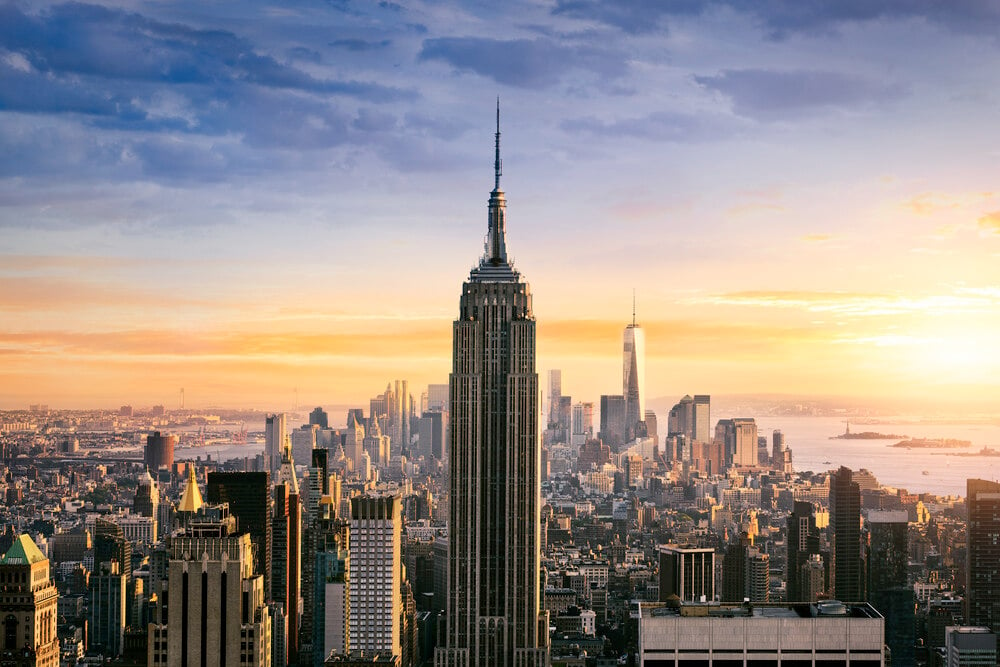
Important features:
- Emblematic Art Deco architecture with geometrical forms and decorative details.
- 1,454 feet tall with a distinctive high rise building design, creating an iconic silhouette on the New York skyline.
- Two observatories located on the 86th and 102nd floors offer a breathtaking panoramic view.
The Empire State Building is a world-famous example of Art Deco architecture in New York City. Completed in 1931, it was designed by architect William F. Lamb and engineered by Shreve, Lamb & Harmon. It is an architectural masterpiece that highlights the iconic Art Deco style, featuring geometric shapes and intricate decorative details. The exterior of this high-rise building is clad in elegant Indiana limestone and modern aluminum panels, seamlessly blending classic and contemporary elements. The lobby of the building is a piece of art in itself, boasting intricate Art Deco details like murals, marble walls, and ornate metalwork. The Empire State Building, which was built with a steel frame, is a symbol of strength and stability. The upper floors have a mooring mast that was once used for airship docking and has historical significance. This high-rise building is also dedicated to energy efficiency, with major improvements, including efficient windows and lighting, contributing to improved environmental performance.
2. Willis Tower (Modern Era)

Important features:
- Iconic high rise building height of 1,450 feet and presence on Chicago's horizon.
- A bundled tubing structural system designed to provide strength and stability.
- Thrilling terrace with a glazed ledge overhanging the high-rise building.
The Willis Tower, formerly known as the Sears Tower, is a skyscraper located in Chicago, Illinois. Completed in 1973, it was designed by architects Bruce Graham and Fazlur Rahman Khan of Skidmore, Owings & Merrill (SOM) and engineered by Khan. The Chicago skyline features the iconic Willis Tower at 1,450 feet (442 meters), which is a prominent feature. The tower's stylish black aluminum façade gives it a modern look and adds durability. One of the tower's highlights is the thrilling Skydeck on the 103rd floor, offering panoramic views of Chicago and Lake Michigan, with the glass-enclosed Ledge extending beyond the building. A high-speed lift system enables efficient vertical transportation. Sustainability is a priority, with recent enhancements, including energy-efficient systems and green construction practices. The skydeck is further improved with dynamic LED lighting for captivating night-time displays. The 99th and 103rd floors have multiple observation areas that allow visitors to enjoy different perspectives of the city.
3. Barbican Estate in London (Brutalism Era)
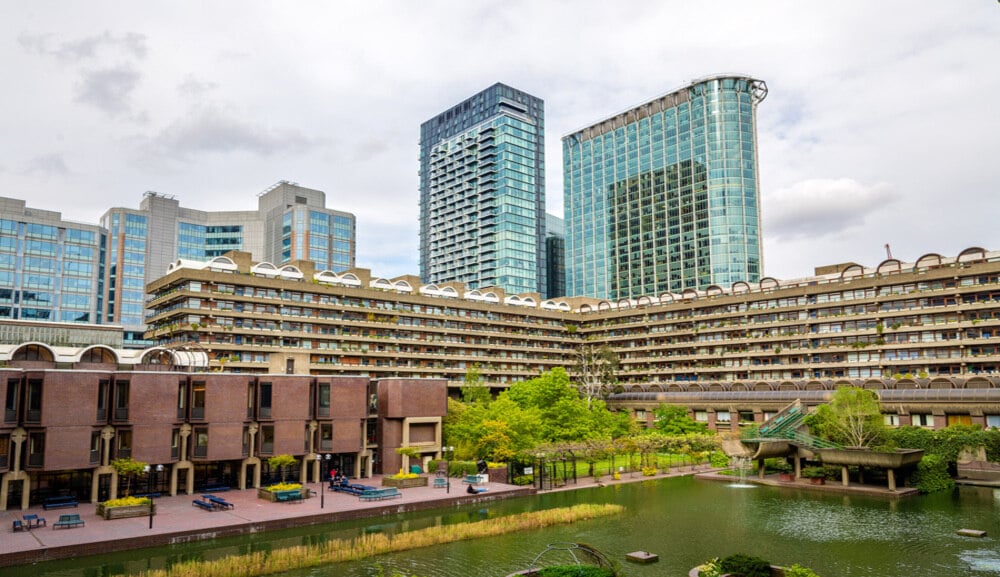
Important features:
- Exposed concrete facades showcase brutalist architecture.
- Integration with the landscape, comprising extensive landscaping and quiet outdoor areas.
- A mixed-use development that combines high rise residential buildings with cultural and recreational facilities.
Located in London, United States Barbican Estate is a high rise residential building and cultural complex that was constructed between the 1960s and 1980s. Architects Chamberlin, Powell and Bon designed it. The Barbican Estate is a prime example of brutalist architecture, showcasing concrete, geometric forms, and functionality in its aesthetic. The complex's distinctive skyline and intimate scale are achieved by using rectangular towers and low-rise blocks to create a visually striking environment. Giving priority to pedestrian access, the Barbican estate includes elevated walkways and pedestrian areas, thereby ensuring a safe and pleasant environment for pedestrians. This mixed-use development blends high rise residential buildings with cultural and recreational facilities. The estate's systematic layout, which is based on a strict grid system, arranges buildings around interconnected walkways and courtyards. The high-rise buildings, which range from 4 to 43 stories, provide panoramic views of London and contribute to the estate's visual impact. In addition, the area offers a range of public spaces and amenities, including a swimming pool, tennis courts and a gym, ensuring a complete life experience for its residents.
4. AT&T Building in New York City (Postmodernism Era)
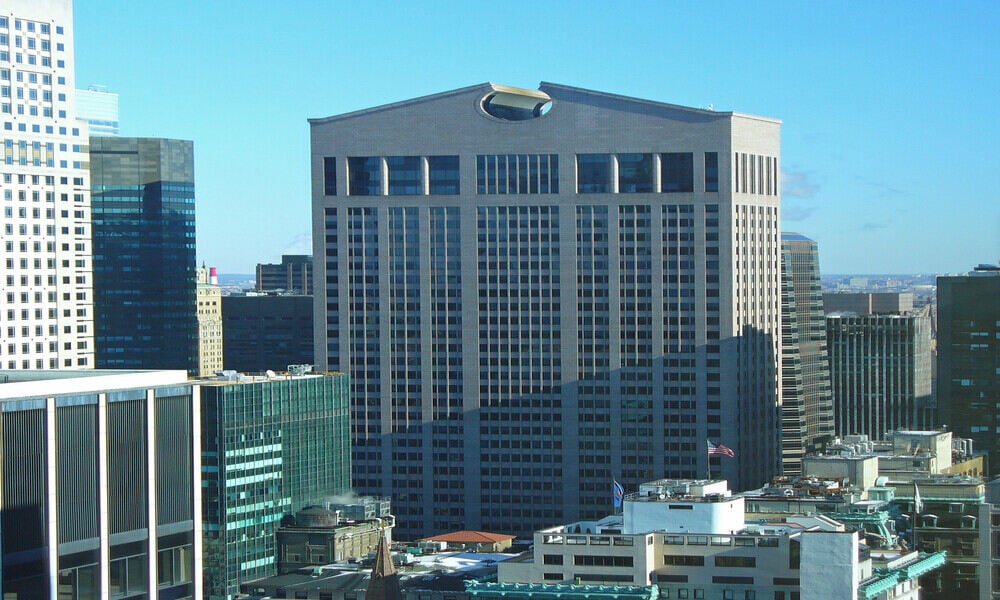
Important features:
- The Chippendale roof is a design inspired by furniture design.
- The facade of this building is made of pink granite, exuding elegance and grandeur.
- The large glass-roofed atrium and public spaces create an open and dynamic environment, focusing on creating an open and dynamic environment.
The AT&T Building, now known as the Sony Tower, is a skyscraper located in Midtown Manhattan, New York City. Completed in 1984, it was designed by architect Philip Johnson and engineer John Burgee. It is a prime example of postmodern architecture, characterized by its incorporation of decorative elements, historical references, and individuality. The grand and inviting entryway is created by the arched entrances at street level, which seamlessly connect with the surrounding urban environment. The facade's appearance is enhanced by vertical stripes of dark reflective glass and lighter-coloured masonry, which add depth and visual richness to the building's appearance. The structural elements of the building, such as visible steel trusses and struts, are expressed and celebrated, adding industrial aesthetics to the overall high rise building design.
5. CCTV Headquarters (Deconstructivism Era)

Important features:
- Single twisted form with angled turns connected into a loop.
- Steel structure with exposed components for industrial aesthetics.
- Primarily glass façade with transparency and panoramic views.
The CCTV Headquarters, also known as the CCTV Tower, was built between 2004 and 2012. The architectural design of this high-rise building was led by the Dutch architectural firm OMA (Office for Metropolitan Architecture), specifically by architect Rem Koolhaas and his team. The structural engineering of the building was handled by the engineering firm Arup. It is an exceptional architectural feat, with its distinct shape of two leaning towers connected in a continuous loop. With a predominantly glass façade, the CCTV seat provides transparency, abundant natural light, and panoramic views over the surrounding city. The exterior is adorned with diagonal bracing elements, which provide structural support and create a visually striking pattern. A spectacular aerial bridge links the two towers, serving as a public viewing platform and enhancing the building's architectural appeal. The structure's mass is divided into void spaces that are varied in size, which provide public areas like atriums and courtyards. Landscaped areas and green spaces are integrated into the high rise building design to add a feeling of nature and create recreational areas for both visitors and residents. At night, The CCTV Headquarters is a stunning sight thanks to its sophisticated lighting system, which highlights and accentuates its unique form.
Read more: 7 Best Career Roles in Computational Design for Architects and Engineers
6. The Shard (Contemporary Era)
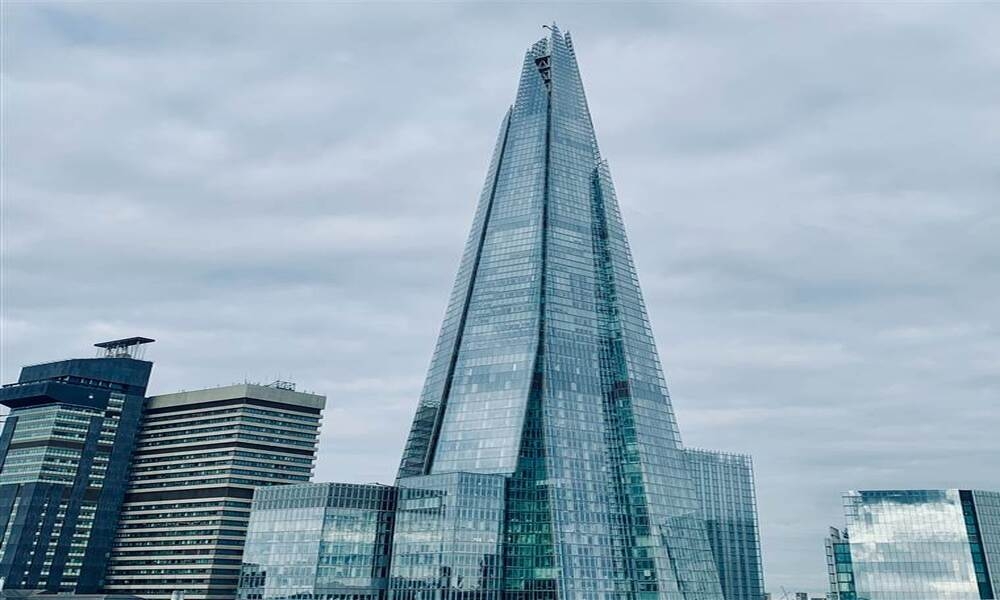
Important features:
- The highest building in London, overlooking the horizon.
- The unique Shard-like shape is the foundation of the striking silhouette.
- Glass façade with panoramic views and abundant natural light.
The Shard, also known as the Shard of Glass, is a skyscraper located in London, United Kingdom. Completed in 2012, it was designed by architect Renzo Piano and engineered by Arup. The Shard, standing at an impressive high rise building height of 310 meters (1,016 feet), is the tallest building in London, dominating the skyline as the tallest building in the city. The Shard-like shape of this building creates a striking silhouette that is instantly recognizable. The building's glass façade is transparent, allowing for panoramic views and ample natural light to flood the interior spaces. With its dynamic angles and oblique facades, The Shard looks captivating from different points of view. The viewing platform, known as The View from The Shard, gives visitors a 360-degree view of the cityscape. As a mixed-use development, Shard encompasses offices, apartments, hotels, restaurants, retail and public spaces, supporting a dynamic urban environment. The high-rise building's sustainable features, such as high-performance glass, rainwater harvesting, and energy-efficient systems, promote eco-friendly operation.
7. Shanghai Tower (Green Building Era)

Important features:
- Impressive height with twisted cylindrical form.
- Sustainable design that prioritizes energy efficiency and air quality.
- Tapered form designed to enhance stability and decrease wind resistance.
The Shanghai Tower is a skyscraper situated in Shanghai, China completed in 2015. Designed by architect Jun Xia of Gensler and engineered by Thornton Tomasetti. It is an architectural feat worth mentioning, achieving a high rise building height of 632 meters (2,073 feet) with its twisting cylindrical shape, making it one of the world's tallest buildings. The tower's sustainability is a key feature, with elements such as a double-skin facade, advanced air filtration systems, and maximized natural light to reduce energy consumption. The tapered form of the tower reduces wind resistance, which in turn enhances stability and safety during high winds. Its vertical multi-spaced organization divides the tower into nine areas, optimizing the use of space and taking into account various functions and activities. A high-speed two-stage elevator system provides efficient vertical transportation, reducing wait times. The tower generates renewable energy by utilizing wind turbines at its top, which can generate renewable energy by utilizing strong winds to reduce its carbon footprint. A robust mega frame system ensures the structural stability of the tower, which has a central concrete core and an outer steel frame, providing exceptional strength to withstand extreme weather conditions.
8. Burj Khalifa
Important features:
- Unparalleled height, standing as the tallest building in the world.
- Sleek and futuristic design, with a spire-like structure dominating the skyline.
- Innovative construction techniques, including reinforced concrete and advanced elevators.
The Burj Khalifa, located in Dubai, United Arab Emirates, is a monumental achievement in high-rise building design and construction. It was opened in 2010, designed by architect Adrian Smith and engineered by Skidmore, Owings & Merrill. The Burj Khalifa stands at a remarkable height of 828 meters (2,717 feet), making it the tallest building globally. Its sleek and futuristic design features a spire-like structure that ascends gracefully into the sky, creating an iconic silhouette against the Dubai skyline. The construction of the Burj Khalifa involved innovative techniques, including the extensive use of reinforced concrete and the implementation of advanced elevator systems to ensure efficient vertical transportation. The building's observation deck, located on the 148th floor, offers unparalleled views of the cityscape below, providing visitors with a truly unforgettable experience.
Read more: Parametric ceiling: Top 10 Innovative Design Ideas for a Spectacular Interior
9. Petronas Towers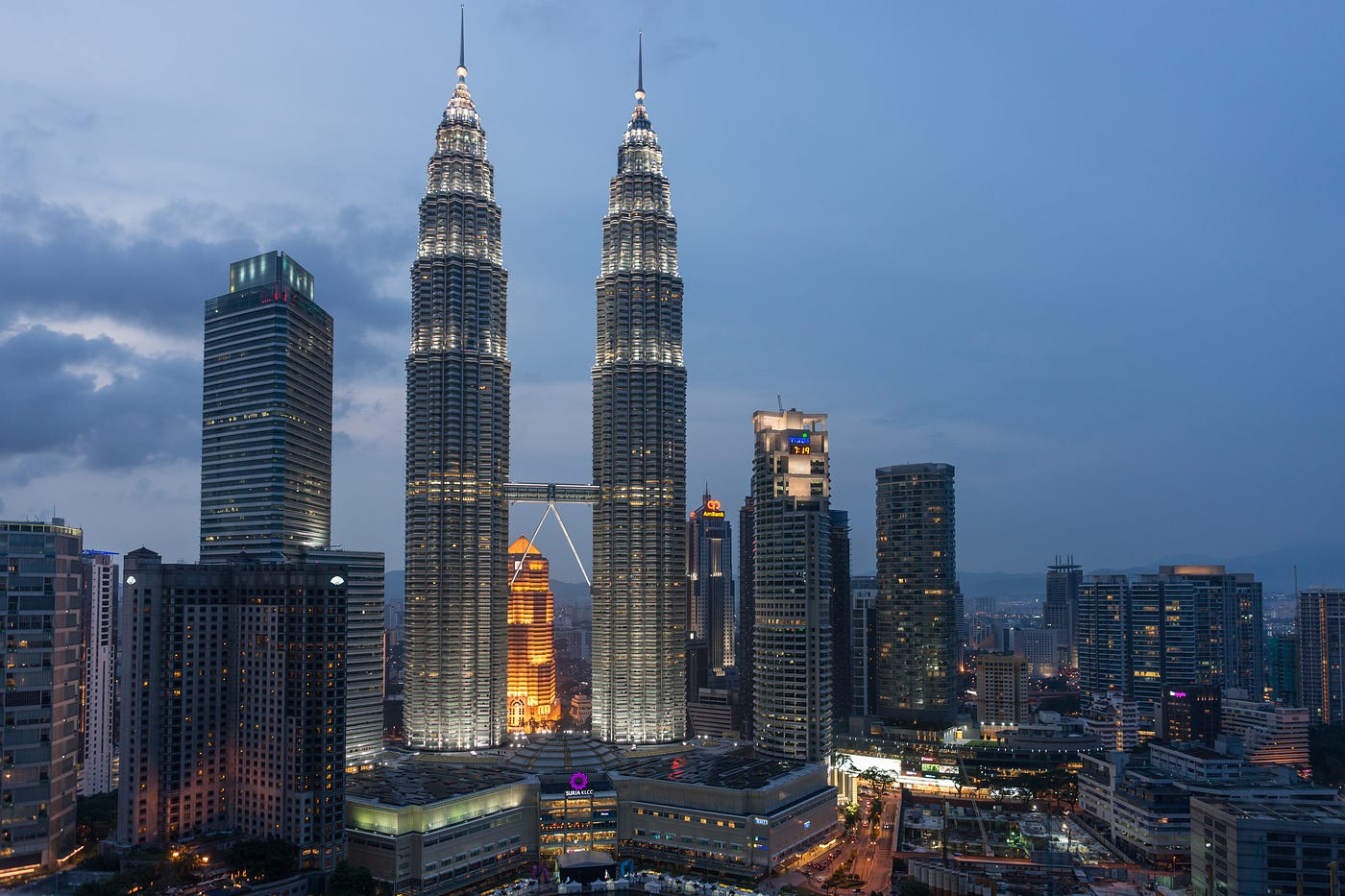
Important features:
- Iconic twin towers with sleek glass-and-steel facades.
- Innovative sky bridge connecting the two towers, offering panoramic views.
- Robust structural engineering to withstand seismic activity and high winds.
The Petronas Towers is located in Kuala Lumpur, Malaysia. It is known as one of the most popular high-rise buildings in the world. It was constructed between 1993 to 1998, at a height of 1,483 feet. The Petronas Towers, designed by architect Cesar Pelli, remained as the tallest buildings in the world from 1998 to 2004. One of the most distinctive features of the Petronas Towers is the sky bridge that connects the two towers at the 41st and 42nd floors. This innovative bridge not only serves as a functional link between the towers but also offers visitors breathtaking panoramic views of the city below. As symbols of Malaysia's economic growth and modernization, the Petronas Towers continue to captivate and inspire visitors from around the world.
10. Taipei 101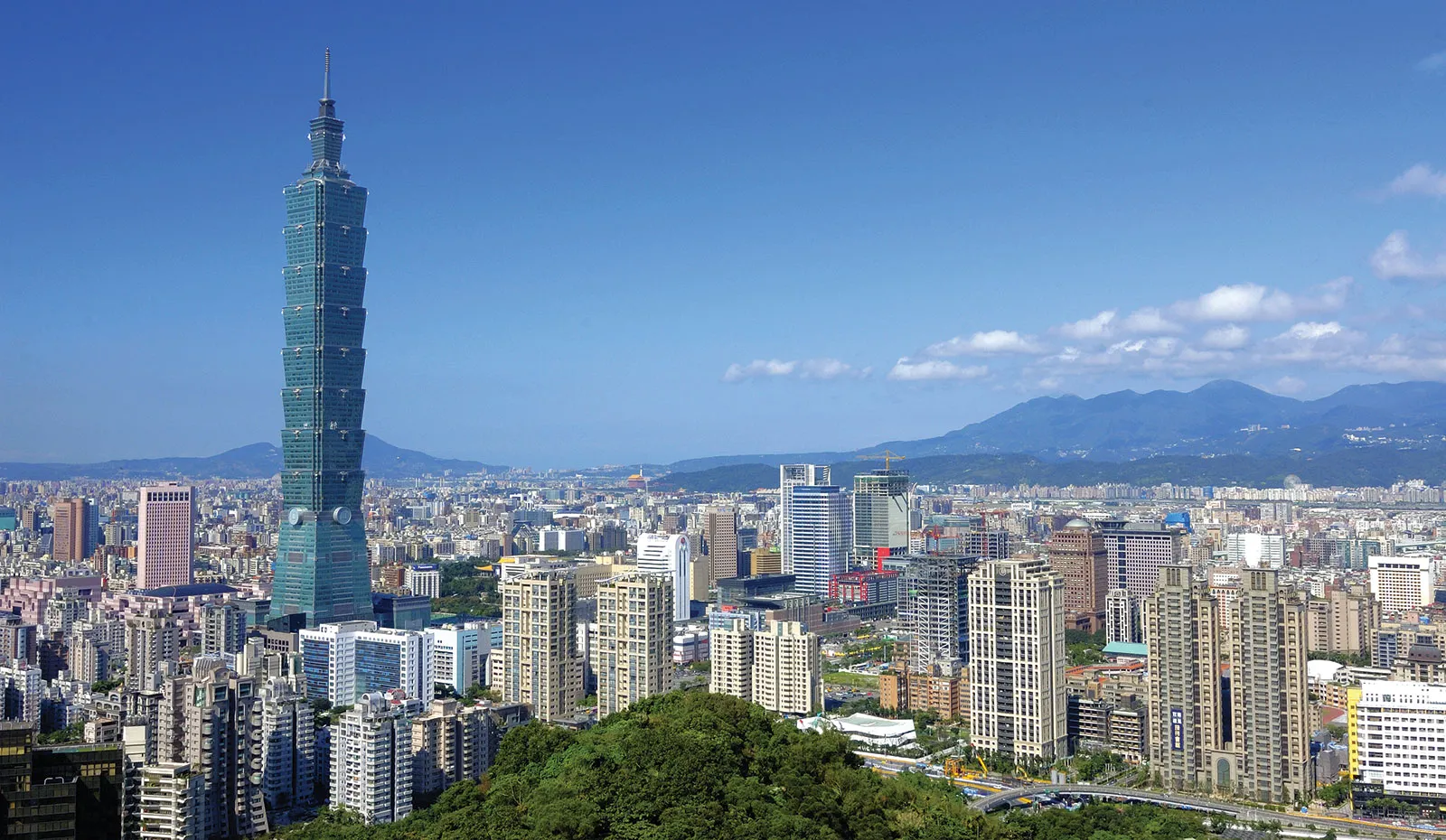
Important features:
- Distinctive pagoda-inspired design, symbolizing traditional Asian architecture.
- Innovative damping system to mitigate the effects of wind and earthquakes.
- Efficient and sustainable construction methods, including energy-saving technologies.
Taipei 101, situated in Taipei, Taiwan, is a remarkable example of contemporary high-rise building design and construction. Completed in 2004, it was designed by architect C.Y. Lee and C.P. Wang. Taipei 101 stands at a height of 508 meters (1,667 feet), with its unique pagoda-inspired design paying homage to traditional Asian architecture while incorporating modern elements. One of its most impressive features is its innovative damping system, consisting of a tuned mass damper located near the top of the building. This system effectively reduces the building's swaying caused by wind and seismic activity, ensuring stability and safety. Taipei 101 also incorporates efficient and sustainable construction methods, such as energy-saving technologies and eco-friendly materials, making it renowned in environmentally conscious high-rise development.
In conclusion
Our journey through the world of high-rise buildings from various architectural eras has been nothing short of impressive. From ancient wonders to modern masterpieces, each structure we explored showcased the innovation, creativity and engineering feats of their respective times. The Great Pyramid of Giza highlights the ingenuity of ancient Egypt, while the Gothic cathedrals of the Middle Ages highlight craftsmanship and devotion. The Renaissance period saw the emblematic dome of Florence Cathedral, symbolizing human fulfillment and the fusion of art and science.
High-rise buildings serve as cultural symbols, connecting us to our past and propelling us toward the future. They reflect civilization's progress, human thought evolution, technological advances, and innovation. These buildings are a living testament to the human spirit, reminding us of our ability to shape our environment and leave a lasting legacy for generations.
Do you wish to create architectural wonders like the ones featured in this blog? If so, look into Novatr's Master Computational Design Course and BIM Professional Course. Using BIM and computational design, architects can construct high-performance buildings with complex modelling, and detailed geometry, combining traditional aesthetics with modern efficiency.
For more updates, check out our Resource Pages!

 Thanks for connecting!
Thanks for connecting!
-1.png)
-3.png?width=1534&height=336&name=MCD%20B%20(Course%20Banner)-3.png)
.jpg)
.png)


